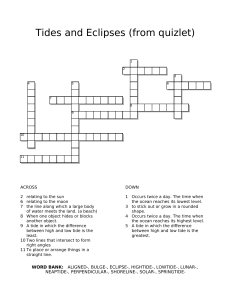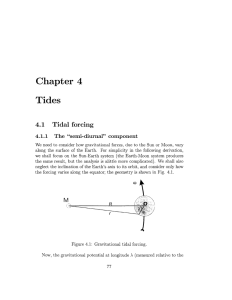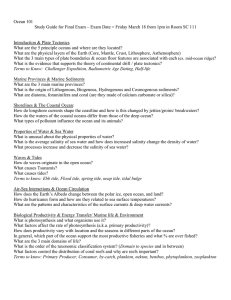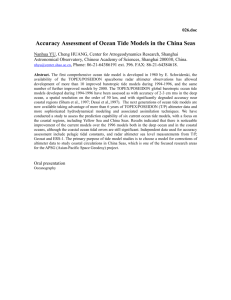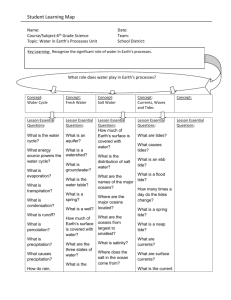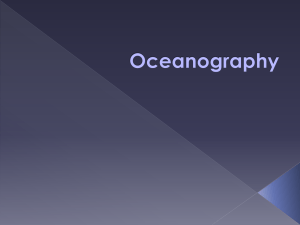Ocean 101 Study Guide Exam #3
advertisement
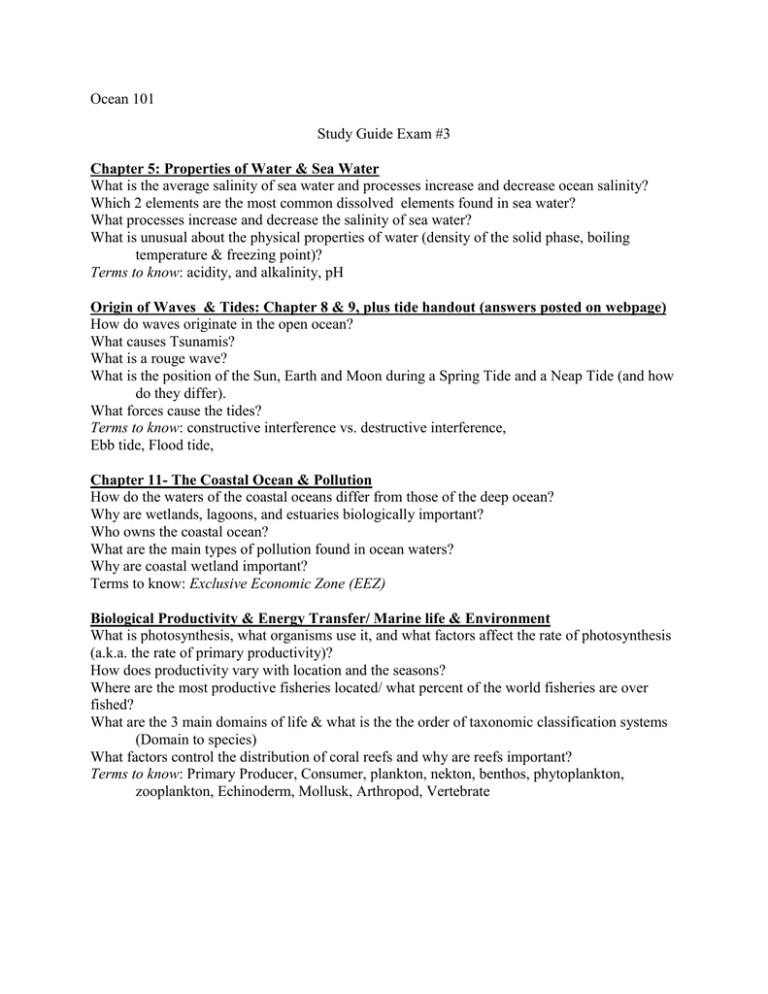
Ocean 101 Study Guide Exam #3 Chapter 5: Properties of Water & Sea Water What is the average salinity of sea water and processes increase and decrease ocean salinity? Which 2 elements are the most common dissolved elements found in sea water? What processes increase and decrease the salinity of sea water? What is unusual about the physical properties of water (density of the solid phase, boiling temperature & freezing point)? Terms to know: acidity, and alkalinity, pH Origin of Waves & Tides: Chapter 8 & 9, plus tide handout (answers posted on webpage) How do waves originate in the open ocean? What causes Tsunamis? What is a rouge wave? What is the position of the Sun, Earth and Moon during a Spring Tide and a Neap Tide (and how do they differ). What forces cause the tides? Terms to know: constructive interference vs. destructive interference, Ebb tide, Flood tide, Chapter 11- The Coastal Ocean & Pollution How do the waters of the coastal oceans differ from those of the deep ocean? Why are wetlands, lagoons, and estuaries biologically important? Who owns the coastal ocean? What are the main types of pollution found in ocean waters? Why are coastal wetland important? Terms to know: Exclusive Economic Zone (EEZ) Biological Productivity & Energy Transfer/ Marine life & Environment What is photosynthesis, what organisms use it, and what factors affect the rate of photosynthesis (a.k.a. the rate of primary productivity)? How does productivity vary with location and the seasons? Where are the most productive fisheries located/ what percent of the world fisheries are over fished? What are the 3 main domains of life & what is the the order of taxonomic classification systems (Domain to species) What factors control the distribution of coral reefs and why are reefs important? Terms to know: Primary Producer, Consumer, plankton, nekton, benthos, phytoplankton, zooplankton, Echinoderm, Mollusk, Arthropod, Vertebrate
